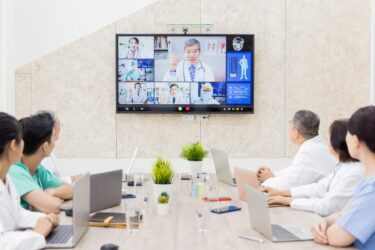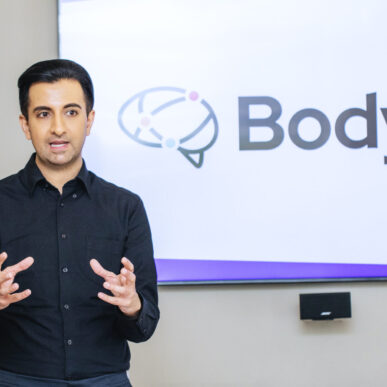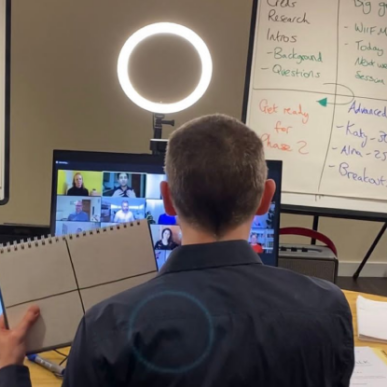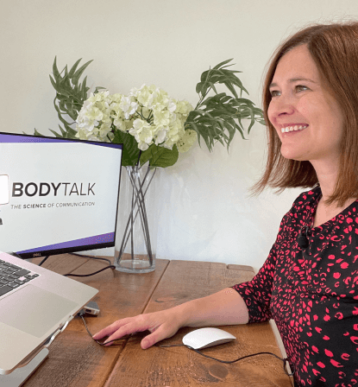“A hybrid meeting needs a little more stage direction than a traditional meeting; otherwise, it can quickly descend into chaos, with people talking over one another”
Hybrid Meetings – 8 Best Practices For Success
Hybrid meetings have exploded in popularity since the pandemic.
Blending the physical and virtual worlds, they are an ideal way to keep teams together over long distances. They also allow people to collaborate, share great ideas and continue working as a team.
But whilst hybrid meetings can offer companies great flexibility and choice, they also bring new challenges.
Challenges of hybrid meetings
So many hybrid meetings fail because they’re treated like traditional office meetings. Unfair importance can be put on the individuals physically present in the room.
This can cause virtual attendees to feel disengaged, left out and bored. Virtual attendees may switch their cameras off in the worst-case scenario and not listen at all!
But careful planning and preparation can help you ensure that everyone can participate, collaborate and feel valued.
Here are 8 top tips to help you run successful and engaging hybrid meetings.
BEFORE THE MEETING
Why are you having a meeting?
“Well, that was another meeting that could’ve been an email.”
If that sentiment is familiar to you, you’re not alone. When a meeting is seen as being ineffective, then it’s just an interruption to someone’s day. Studies have even shown that ‘pointless’ meetings directly negatively affect people’s job satisfaction.
Think about whether you need a meeting. If it’s a company update, could you send it by email? Use tools such as Microsoft Teams, which could allow you to work on projects together without the need for a meeting.
If you do need to have a meeting, it’s essential that you communicate to your attendees as much detail about it in advance as possible. Ensure that you schedule your meetings with a title that describes what the meeting is about.
Set and send out a clear agenda so that people understand the content of the meeting in advance. This will help your hybrid meeting flow smoothly and help people follow it more easily.
Send out reading material in advance
Time is much more precious in a hybrid meeting than in a traditional face-to-face one.
One way to maximise efficiency within a hybrid meeting is to send out as much material as possible for your attendees to read in advance. This could be your slide deck, a document or a spreadsheet. Giving it to your attendees in advance alongside a meeting agenda will help to focus the meeting. It also will minimise the challenge of having to present lots of information to the virtual and face-to-face attendees at the same time.
Instruct your attendees to read through the document in advance and come to the meeting prepared to talk about it.
Explain how the meeting will work
A hybrid meeting needs a little more stage direction than a traditional meeting; otherwise, it can quickly descend into chaos, with people talking over one another.
Taking a minute at the start to explain how the meeting will function will enable you to run it much more smoothly, with everyone understanding how and when they can contribute.
If you want virtual attendees to use a chat box or’ hands up’ function, communicate this in advance. In the same vein, let people in the room know how you want them to join in. Do you want them to use the same chat functions, or should they raise their hands?
Explaining the mechanics of the meeting will help you to seamlessly blend contributions from virtual and face-to-face attendees, making sure that everyone feels valued and part of the session.
DURING THE MEETING
Make use of a moderator
Moderators can help to facilitate the conversations between the virtual delegates and the face-to-face delegates. They can monitor any questions or comments coming in on the chatbox and help direct the meeting by letting people know when it’s their turn to speak.
A moderator is also an essential point of contact for any technical issues virtual delegates might face, helping them feel valued and supported. Having one person nominated to manage the operation’s virtual side can help solve any problems much more quickly and avoid disrupting the rest of the meeting.
Getting the tech right
Technology can make or break a hybrid meeting.
It’s essential your attendees can all be seen and heard.
Virtual attendees should have their cameras on and have a decent microphone to be heard clearly by the people in the room. It’s equally important to ensure that delegates attending in person can be seen and heard by those joining online.
Many offices have Zoom or Teams-enabled rooms that can help focus attention on the person speaking. If this is not available, consider investing in technology such as a 360-degree conference camera.
If people in the room only have their laptops, then ensure that people mute their microphones – otherwise, the echoing feedback will be deafening!
It’s also worth checking the tech works before you start the meeting. Taking 10 minutes to make sure everything is plugged in and working properly will mean that you can start your meeting on time and without the added frustration of trying to find that pesky missing cable!
Think of ways to make it engaging – for everyone
Making a meeting engaging can be quite a challenge when you have both live and virtual audiences simultaneously. Simply presenting a slide deck may not be enough.
There are now many tools that you can use to help to engage your audience, gather feedback and ideas and keep things interesting. Web platforms like Menti can allow people in the room and remotely share ideas and engage with content in a much more fun and collaborative way.
Breakout rooms are also a great way to help to focus the overall discussion. Splitting teams up into smaller groups can help develop a more diverse range of ideas and give shyer members of the team a safe space to speak and get their voices heard.
Make it shorter
There are many all-round benefits to having shorter meetings, but for hybrid meetings, it’s even more important to help avoid the ‘zoom fatigue‘ for virtual attendees, which can be caused by staring at a screen (and an image of yourself!) for too long.
Many companies are now adopting ‘speedy meetings’, which are typically shorter than usual to help to maximise efficiency and focus and give back’ precious working time.
For example, if you schedule your meeting to last an hour, try to end it after 40 minutes. This will not only help you to focus the content of your meeting more precisely, but it will also allow your attendees to stretch their legs or get a cup of coffee before their next meeting or to catch up on emails or outstanding work.
Nobody is ever going to complain if a meeting underruns!
AFTER THE MEETING
Post-meeting: Summaries and feedback
Following up with your delegates is a handy way to gather feedback and find out what has gone well and needs improvement.
After the meeting, send a summary email of the content covered, issues raised, and action points. At the same time, take the opportunity to ask for feedback about the meeting itself: the mechanics, the technology and the running order: this will again ensure that everyone feels included and gives them the ability to contribute to better meetings in the future.
Hybrid meetings are still in their infancy, and it takes a little bit of trial and error to find out what works best for your company. If you’d like to learn more about how you can use hybrid meetings to get the best out of your team, get in touch with us today. We’ll be happy to help.




















